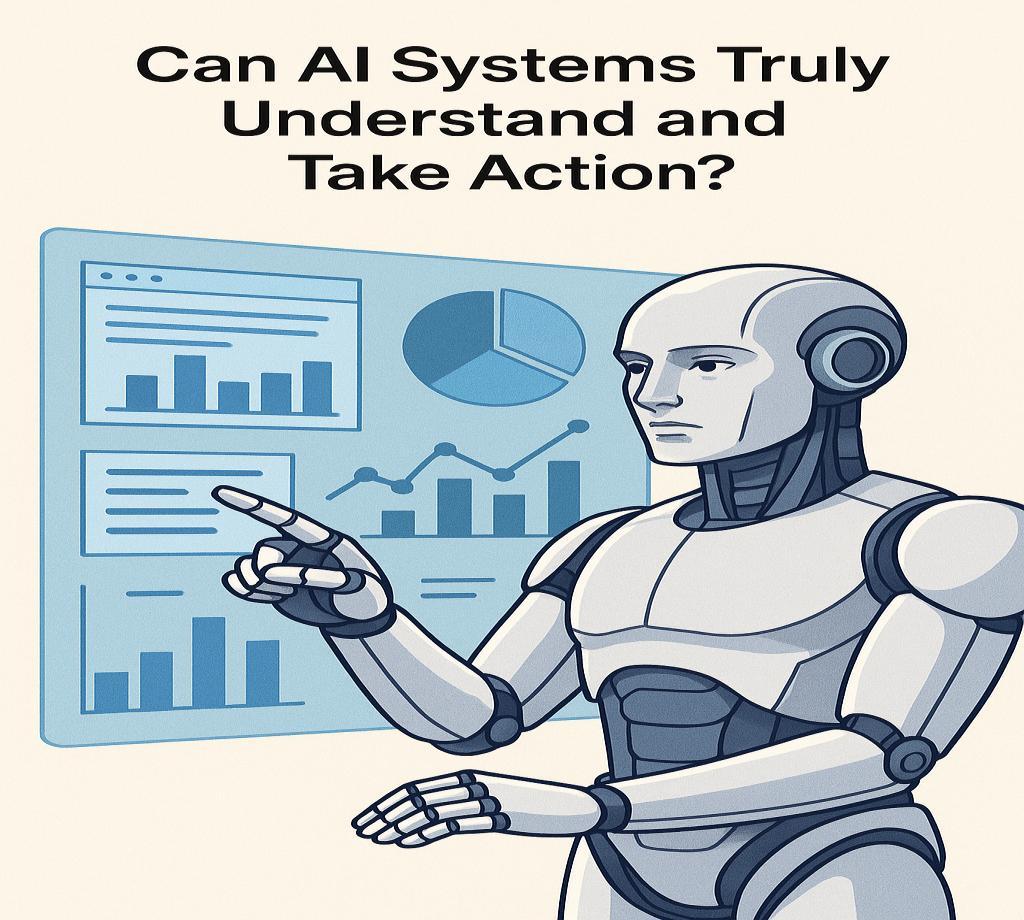Interview – Bridging AI Hype and Reality in Project Management
Rafa Rayeeda Rahmaani
Chief Strategy & Growth Officer

Are we expecting too much from AI, or have we not yet tapped its true potential in managing work? To dig into this question, I spoke with Dr. Jane Atkins, a professor at Stanford University and an expert in organizational technology. Dr. Atkins has a unique vantage point: she’s seen countless “AI in business” fads come and go, but also works closely with companies genuinely reinventing how work gets done. Our conversation focused on how to ensure AI’s promise (especially the true intelligence we’ve been discussing) translates into realworld results for teams. Below are highlights from our interview, shedding light on what’s hype, what’s real, and what’s next. Q: Many tools today claim to use AI for productivity. What’s missing in the current wave of AI project management tools? A: (Dr. Atkins): “Most current tools are still fairly narrow. They might automate a simple task or give you a basic recommendation, but they lack contextual understanding. I’ve observed teams try out AI add-ons that, for example, auto-prioritize tasks — but the minute something unusual comes up (like a sudden change in client requirements), the AI’s advice goes haywire because it doesn’t truly grasp the project’s shifting context. The missing piece is what we’d call domain intelligence: the AI needs to understand the environment it’s operating in, not just follow a generic algorithm.” She gave a concrete example of a pilot she oversaw: a project management AI suggested reassigning a critical task to a junior employee because its algorithm saw that the senior engineer was overloaded. In isolation, that might seem logical, but the AI failed to recognize the task’s complexity and the junior member’s lack of experience. “A human manager wouldn’t make that swap because they intuitively understand the skill match and stakes involved,” Dr. Atkins noted. “The AI didn’t have the full picture – it was optimizing one dimension (workload balancing) without understanding quality and risk.” This anecdote underscores why “true intelligence” is so important – an AI needs a multifaceted understanding of projects, not just single-metric optimization. Q: How can organizations move toward AI with true intelligence? Is it about technology, data, culture…? A: “All of the above. Technologically, one promising route is integrating knowledge bases or graphs into AI, so it has a memory of past projects and a web of relationships between data points. That way, it isn’t starting from scratch every time or making isolated judgments – it’s drawing on a broader understanding. Culturally, companies need to trust AI with more than trivial tasks. In our research we found that when teams treated the AI as a partner rather than a tool, they got far more out of it. For instance, instead of just accepting whatever the AI suggested, project leads would have the AI explain its reasoning, then discuss as a team. That interplay actually helped train folks to think more systematically too. It’s like having a very analytical team member that forces everyone to up their game.” Dr. Atkins pointed out that companies leading in this space often invest in high-quality data and domain models. “One tech firm I know created an internal ‘project graph’ of all their past project data. When they plugged an AI into that, its recommendations became remarkably insightful, almost like it had inherited the collective experience of dozens of project managers. We saw error rates drop and timeline estimates improve significantly.” Indeed, she mentioned a finding from industry analyses: when AI is given rich contextual data, some organizations have seen project delivery speeds improve by 20-30% internally, beyond just the basic 30% time savings in admin work that McKinsey notedhashstudioz.com. It shows that efficiency gains can compound when AI moves from shallow to deeper understanding. Q: What pitfalls should teams watch out for when implementing such intelligent systems? A: “One big issue is over-reliance without understanding limits. I always say: treat AI as a genius intern, not a seasoned executive. It can digest information and spot patterns at superhuman speed (no human can read a thousand status reports in a second and draw conclusions!), but it still lacks the full common sense and ethical judgment of an experienced human. We’ve seen cases where an AI-driven scheduling tool pushed teams toward unrealistically short timelines because it assumed everyone could be 100% productive with no downtime – clearly not how humans work! Another pitfall is data bias. If the historical data contains biases (say, consistently underestimating testing time), the AI can actually reinforce those mistakes unless someone intervenes.” Her advice for getting it right is to keep humans in the loop: “The best outcomes happen when AI and humans collaborate. Let the AI crunch numbers and propose insights, but have the team validate and adjust those insights. In essence, augmented intelligence rather than autonomous intelligence. That’s how you prevent disasters and get the best of both worlds.” This interview with Dr. Atkins highlights a critical juncture: to unlock AI’s full potential in project management, we must infuse it with true intelligence and use it wisely. As we move forward in this blog series, the focus will shift to how our own product, ActionBoard, tackles exactly these challenges. Armed with expert perspectives and lessons learned, we’ll see how ActionBoard’s design attempts to embody true intelligence – from integrating rich context via an ActionGraph to keeping humans in control of the narrative. In the next blog, we turn theory into practice, introducing how ActionBoard.ai is bringing these ideas to life for teams today.
